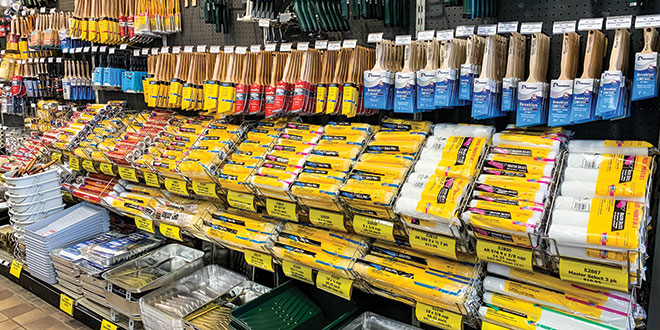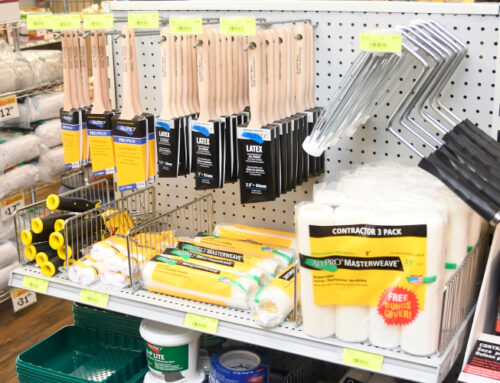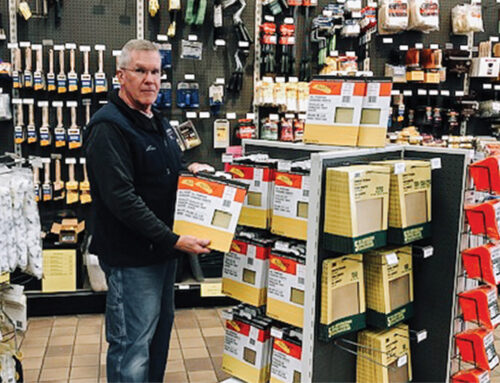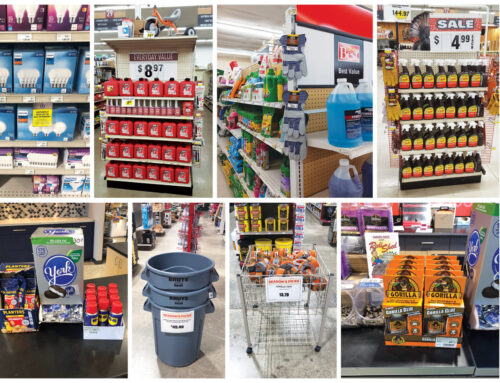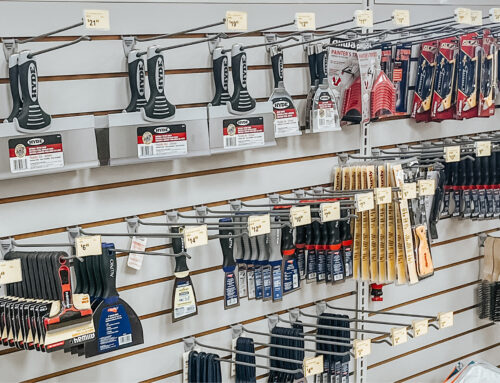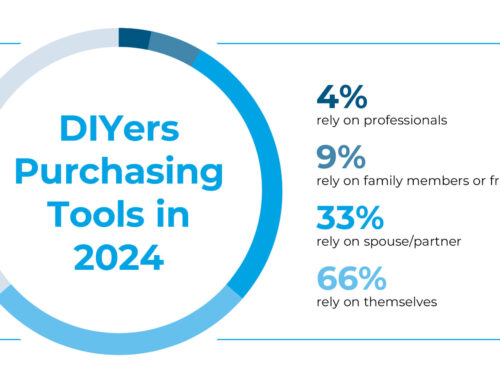Brushes, rollers and applicators present a significant opportunity for retailers to not only sell more product, but educate and inform customers, hopefully earning repeat customers in the process.
When it comes to paint applicators, the choices are nearly endless. Many brushes and rollers appear similar to some customers, especially DIYers, so they might not understand the nuances of different types of applicators and which ones to use for the paint job they want to tackle.
Purcell’s Wallpaper & Paint has been successfully selling paint, applicators and other sundries for over 40 years and has established itself as a trusted source for both DIY and professional customers.
With three locations in Syracuse, New York, the paint applicator category at Purcell’s has continued to grow, offering an opportunity to connect with and educate customers and add to the company’s bottom line.
When he first started with the company nearly 30 years ago, Purcell’s president Todd Halbig says one of his favorite parts of the job was product merchandising. The stores carried a broad selection of applicators, but Halbig merchandised and organized displays to make them easier for customers to shop and find what they needed. Now, each Purcell’s location has a whole wall of well-organized brushes, rollers and applicators, with several hundred SKUs in the category.
“Things have really changed over the years. Now we hardly have any paint in the actual retail space. It’s all applicators, brushes, rollers and other paint accessories,” says Halbig. “Our customers know we have paint, but it’s important we show them we have all the extras they need as well.”
Purcell’s has found success in this category through a carefully curated selection of merchandise, knowledgeable employees and creative merchandising.
Offer the Right Options
The selection of paint applicators at Purcell’s is varied, but it isn’t built without careful consideration. Halbig says carrying American-made products is the biggest factor when choosing products because he wants to support U.S. companies.
Halbig also wants to give customers options in quality and price. The store has many of its applicators and other sundries divided into good, better and best categories because not every project requires the same quality brush or roller.
“Someone may use a toss brush for a quick touch-up, a premium brush for painting a piece of furniture or trim and a better brush for things like exterior painting, where the brush gets beat up faster than interior painting,” Halbig says.
Offering good, better and best options also follows the company’s philosophy to be sure each customer has a choice, says Halbig. The stores also sell various price levels, from the higher end to the lower end and everything in between.
Purcell’s inventory tracking system is also crucial to knowing what to stock, as it tracks what paintbrushes and rollers sell the most, so Halbig knows what to keep ordering.
Educate Your Employees
Well-educated employees are another key to Purcell’s success in selling paint applicators. The employees go through frequent training sessions from the vendors the company uses to stay on top of the ever-changing paint applicator market.
“Our vendor agent is our go-to for training and new products,” says Halbig. “They make sure we know about new products, trends and changes, and they keep us up to date with what works best with the paints we sell.”
Many of Purcell’s employees also use the paint and applicator products they sell in their own homes and test them out in the stores, giving them firsthand knowledge they can share with customers.
“It’s much easier to sell paintbrushes and rollers when we’ve actually used them,” Halbig says. “We use them in our own homes or get them out at the store to get a sense of how they work, so we can explain that to customers.”
Once a Purcell’s employee educates the customer on the best applicator for their needs and narrows down the choices, they leave it up to the customer to choose the actual product. The stores carry brushes with different types of handles and varying sizes, so customers can pick what is most comfortable for them.
“We never grab the brush for the customer, but want them to choose one that feels the best to them and is in the price point and quality category they want,” says Halbig. “If they’re comfortable with a brush, they’re going to paint better.”
Look Beyond the Shelves
When the pandemic prompted shutdowns across the world, Purcell’s also had to close its doors to in-person shopping, but got creative to continue selling applicators.
“At the start of the pandemic, we were crazy busy, but right before everything shut down, we got a little scared because a lot of other independent retailers were closing their doors and going curbside, which is fine for some products,” Halbig says. “But for things like applicators, customers can forget what they need and what we have.”
Taking advantage of the large windows at the front of each store, Halbig created a board of the top 20 applicators in the store and displayed it in the windows for customers to see. He also posted the board on the company’s Facebook page.
The store displayed similar boards previously for different trade and customer shows. Halbig took the concept and tweaked it, creating a useful and innovative way to sell paint applicators.
“Along with the menu board, we had a sheet with a corresponding key so when people called and said, ‘I want No. 1 or I need No. 2,’ we knew what they needed, and we could easily fulfill their order,” Halbig says. “Our customers loved it. When they couldn’t come into the store, it helped them remember what they needed.”
3 Brush Basics
One size doesn’t fit all when it comes to paintbrushes. Help customers choose the right applicator by brushing up on these paint tool basics.
Types of bristles
The bristles in a paintbrush are typically made of natural materials or animal hair, which are best for oil-based paints, varnishes and polyurethanes, or synthetic materials like nylon or polyester, which work well with latex paints. Brushes with stiffer, shorter bristles hold stain and varnishes better and allow for fewer drips.
Sizes
Paintbrushes come in a variety of sizes, but the most common sizes are 1 inch and 2 inch for trim, 3 inch for doors and cabinets and 4 inch for large, flat spaces.
Shape of bristles
Brushes with angled or slanted bristles are best for trimming corners and edges, while squared-off bristles are used primarily for flat areas. Rounded sash brushes work best for small trim and faux finishing.
Assortment of Applicators
When it comes to painting walls and trim, brushes and rollers get the job done, but for more specialized projects, your customers will want a more specifically designed applicator. Knowing what’s available and how customers can use them for special projects is an easy way to increase add-on sales. Here’s a breakdown of the different types available.
Paint pads are flat, handheld applicators that create straight lines and are ideal for painting ceilings, trim and tight areas.
Paint mitts are typically made of lint-free fabric and allow for better coverage when painting railings, fences and irregular shaped items.
Corner rollers are made of foam and fit into most corners, applying paint to both sides of the corner at one time.
Stencil brushes are used with paint stencils, have firmly packed and short bristles and come in different widths.

